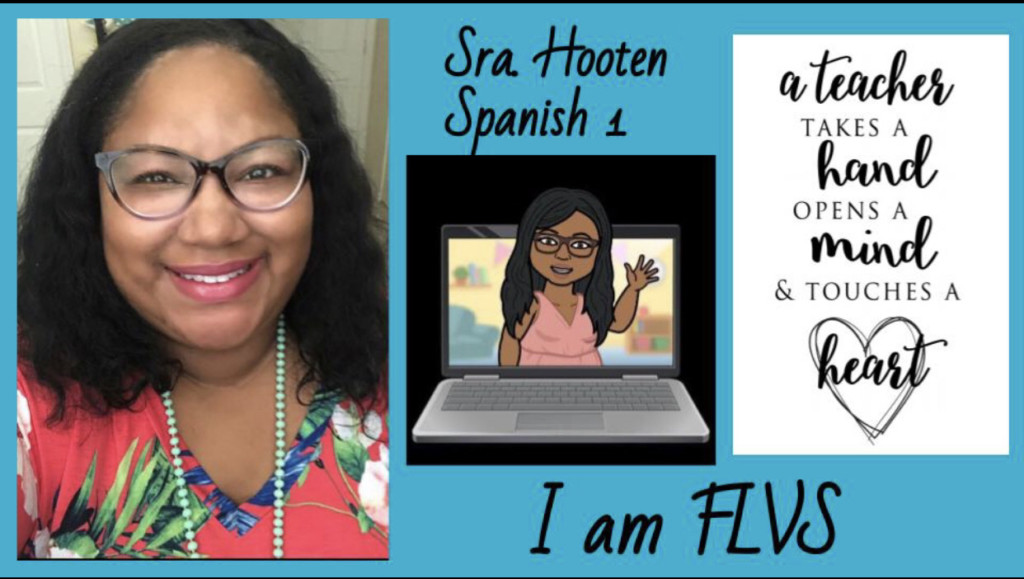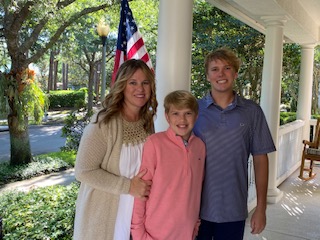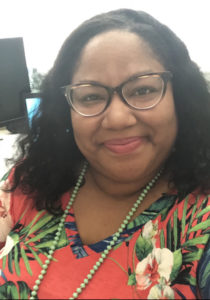
When the coronavirus pandemic shuttered brick and mortar schools and fueled a rush to online education in the spring of 2020, Florida Virtual School stepped up, investing $4.3 million in an expansion that allowed it to serve 2.7 million students by May.
As COVID-19 cases soared over the summer and concerned parents looked for alternatives to in-person learning, Florida Virtual School again emerged as a hero. School figures show full-time enrollment was up between July and September by 5,644 – a 98% increase – while the flexible virtual program saw course requests increase by 231,128, or 57% from the same time in 2019.
To accommodate the influx of students, Florida Virtual School hired additional teachers for a total of 2,500 faculty members during the 2020-21 school year.
The uncertainties associated with a global pandemic along with the added course load created challenges, even for the most experienced online educators. Two Florida Virtual School teachers, Leann Flynn and Summer Hooten, not only weathered the storm, but experienced the joy of teaching while reveling in what sets Florida Virtual School apart from district online programs.
Building real relationships is still No. 1

“A lot of students never had anything like this happen in our lives,” said Flynn, a 20-year FLVS veteran who last year taught leadership skills to high schoolers. The curriculum, Mawi Learning, is based on the life of Mawi Asgedom, an Ethiopian refugee who graduated from Harvard University.
“His whole story was about grit and perseverance. That story is incredible right now,” Fynn said. “The course outlines these things people have gone through and what it takes to really have courage. It’s about overcoming.”
Hooten, who transitioned from traditional school to the FLVS Flex program several years ago so she could spend more time with her family, said the increase in students challenged her to work harder to maintain the personal connections for which FLVS is known. One tactic she employed was keeping careful notes on students’ interests and referring to them during one-on-one conferences.
“I asked them about their games, about their activities,” she said, explaining that at a traditional campus, it’s easier to know who is in the school band or the volleyball team.
Schedules are a must
As a virtual school, FLVS is not like synchronous district school online programs. Some lessons are live, but most are done on a student’s own time in line with their schedules. But that doesn’t mean they have permission to slack off.

“You are expected to continuously work on assignments,” Hooten explained. “Some traditional students who had taken classes with us understood how the program worked, but we got an influx of students who hadn’t taken classes with us before. It took some time to help them understand. We had to try to teach students different habits to help them continue to be successful. We do have expectations.”
Hooten compensated by scheduling more live lessons than usual and creating more opportunities for collaboration and connection. One lesson asked students to add photos to a map of where they were from so their classmates could get to know them better.
“I wanted them to feel more connected with other students even though they were in a virtual world, to be able to put a face with a name,” she said.
Flynn said she was more intentional than usual about checking in with students, faithfully keeping the commitment FLVS teachers make to be available for questions each day until 8 p.m. She also prepared video tutorials that students could access any time.
“They loved those,” she said, adding that she plans to continue that practice even after the pandemic is a memory.
Trust your instincts
Hooten said she had a few situations where students struggled, and she responded proactively.
One student who had consistently turned in assignments suddenly stopped. Rather than just entering failing grades, Hooten called the girl’s mother to see what was going on. Sure enough, there extenuating circumstances.
The girl’s computer was broken. Her mother had been working two jobs to make ends meet and had no money for a replacement. So, Hooten and a couple of friends dug into their own pockets and bought the girl a new Chromebook.
“The mom was just so thankful,” Hooten said. “Once her daughter got the computer, she submitted 10 assignments.”
Some students struggled because of school district mandates that required them to turn in their school-issued computers early. That got Hooten thinking about the benefits of education savings accounts, which provide families the flexibility they need to provide materials, including laptops, for their children despite their income level.
“That could help so many students,” she said.
Kindness goes a long way
Both teachers said the pandemic placed them in a position of being more than instructors. Each dealt with students who had been personally affected in some way. Several had family members who became ill and were forced to observe quarantine rules that involved sliding dinner plates under doors.
Other students experienced depression from stress and isolation. And because other family members were staying home to avoid infection, learning environments often were less than ideal. Backgrounds were noisy, and siblings sometimes had to share computers.
“We had to look at every student individually and the situation they were all in,” said Flynn, whose own children were learning online while she was teaching. “We were all struggling.”
Flynn said her heart went out to traditional classroom teachers who were expected to learn virtual instruction in a matter of days and later teach in-person and online at the same time.
“It’s like building a plane as you’re flying it,” she said.
Flynn said the challenging part for her was stepping into the role of counselor.
“There were just a lot of stressed-out students, and we saw a lot of anxious families,” she said, adding that she was glad FLVS’ personalized learning model allowed teachers to “be the encourager for these families when there was a lot of discouragement.”
Hooten recalled how she sent a depressed student a stress ball and a book. She also was able to give him an extension on some assignments. He finished the course successfully.
“He ended up writing me a thank you later,” she said. “It was the sweetest thing ever.”
At the end of a long academic year, Flynn and Hooten agree that FLVS gave them the chance to practice what the school does best: deliver education that best fits each student’s needs. They consider FLVS, which already offers unbundled services, as a gateway to the future of customized learning – despite the fact that none of Flynn’s friends had heard of it when she told them two decades ago she was going to work there.
Now, she said, “what we were envisioning is what is happening right now.”


